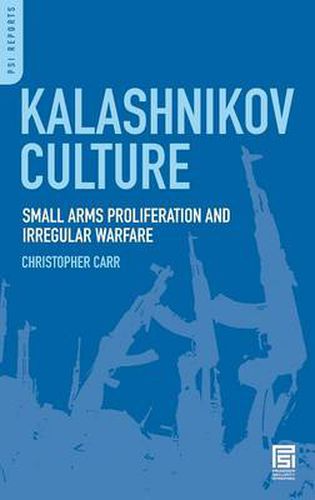Readings Newsletter
Become a Readings Member to make your shopping experience even easier.
Sign in or sign up for free!
You’re not far away from qualifying for FREE standard shipping within Australia
You’ve qualified for FREE standard shipping within Australia
The cart is loading…






This work is a bridge between the failed/weak states’ literature and that which examines issues relating to small arms proliferation. Carr investigates the cultural impact of the availability of these easy-to-come-by weapons. This cultural dynamic has a direct, and deadly impact on issues such as arms control, illegal and illicit trading, gun cultures, the nexus between criminality and militia warfare and the social impact of arms proliferation, and the struggle for weak states who attempt to govern. The case studies will appeal to those with regional or comparative interests. Although the tone is academic, the topics and the subject matter will make this book of interest to those outside of the academic community.
The work takes the form of alternating chapters in which elements of Kalashnikov enculturation, for example the peculiar forms of aberrant economic activity that exist within Kalashnikov cultures, are paired with chapter-length mini-case studies, such as that dealing with armed gang movements in Jamaica, Papua New Guinea, and Brazil. The whole work is bounded by the contention that under certain conditions heavily weaponized societies create their own milieu, which in turn gives rise to communities that find ways to survive (and sometimes thrive) within an ambiance of chronic insecurity.
$9.00 standard shipping within Australia
FREE standard shipping within Australia for orders over $100.00
Express & International shipping calculated at checkout
This work is a bridge between the failed/weak states’ literature and that which examines issues relating to small arms proliferation. Carr investigates the cultural impact of the availability of these easy-to-come-by weapons. This cultural dynamic has a direct, and deadly impact on issues such as arms control, illegal and illicit trading, gun cultures, the nexus between criminality and militia warfare and the social impact of arms proliferation, and the struggle for weak states who attempt to govern. The case studies will appeal to those with regional or comparative interests. Although the tone is academic, the topics and the subject matter will make this book of interest to those outside of the academic community.
The work takes the form of alternating chapters in which elements of Kalashnikov enculturation, for example the peculiar forms of aberrant economic activity that exist within Kalashnikov cultures, are paired with chapter-length mini-case studies, such as that dealing with armed gang movements in Jamaica, Papua New Guinea, and Brazil. The whole work is bounded by the contention that under certain conditions heavily weaponized societies create their own milieu, which in turn gives rise to communities that find ways to survive (and sometimes thrive) within an ambiance of chronic insecurity.